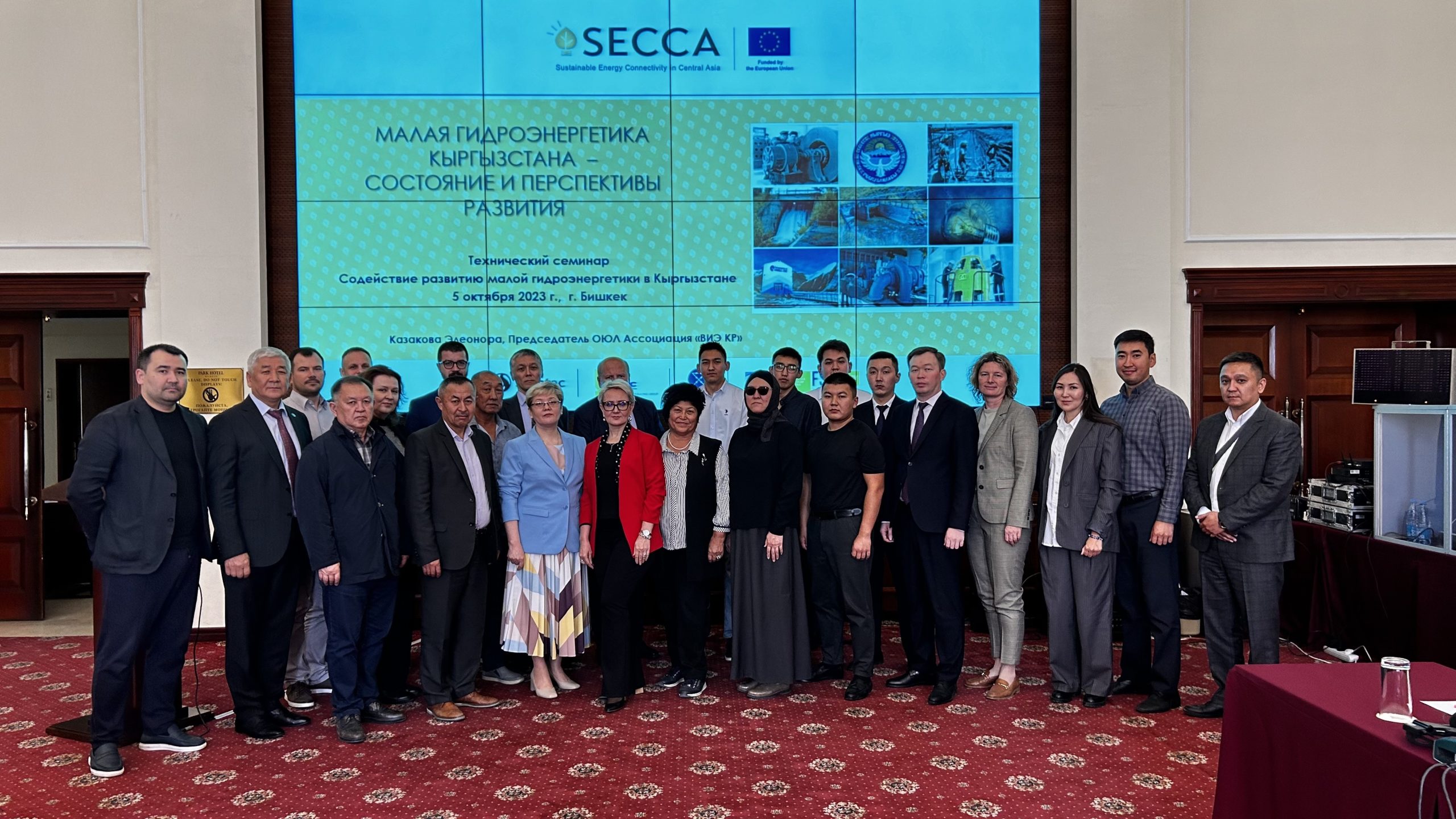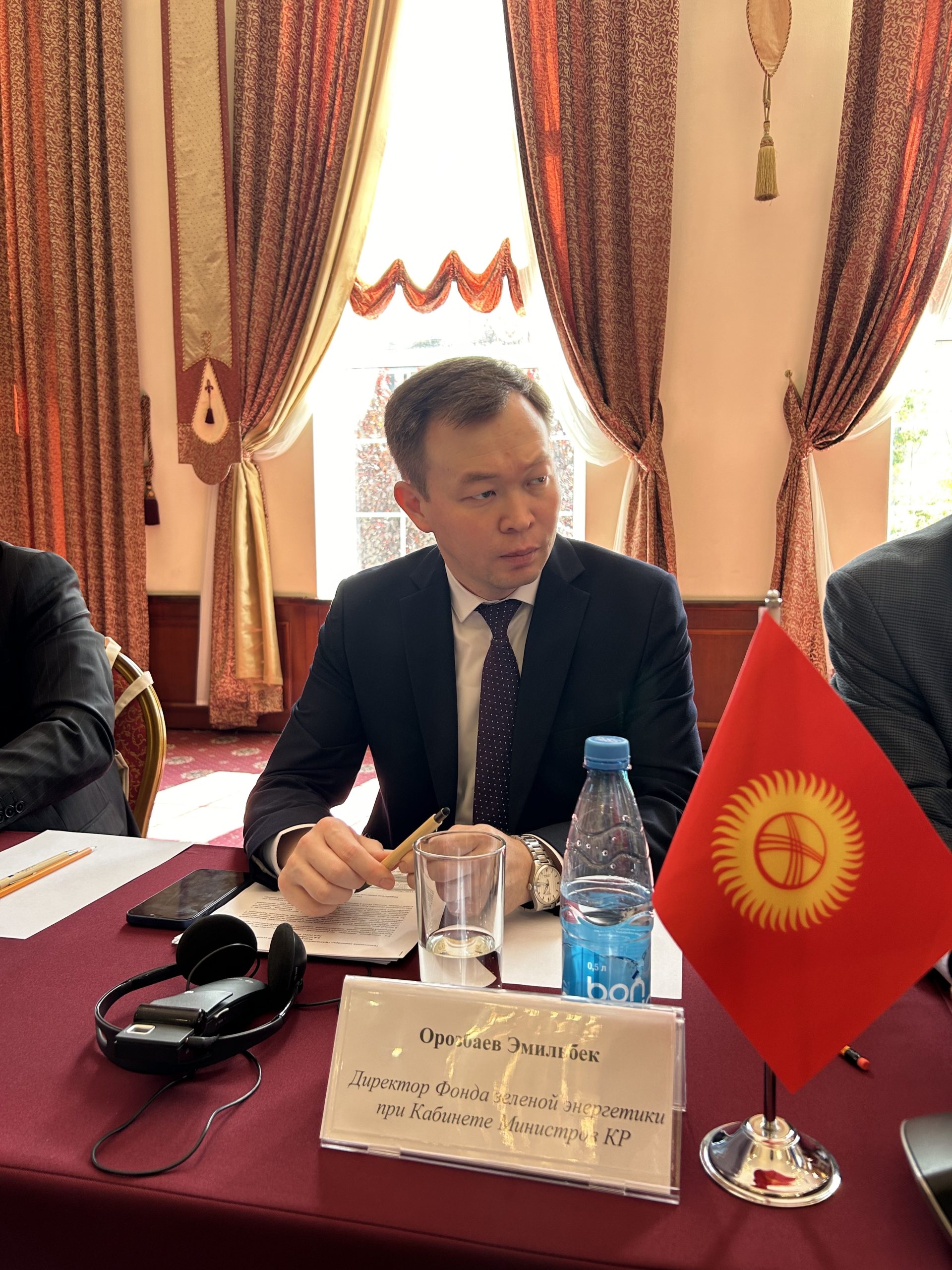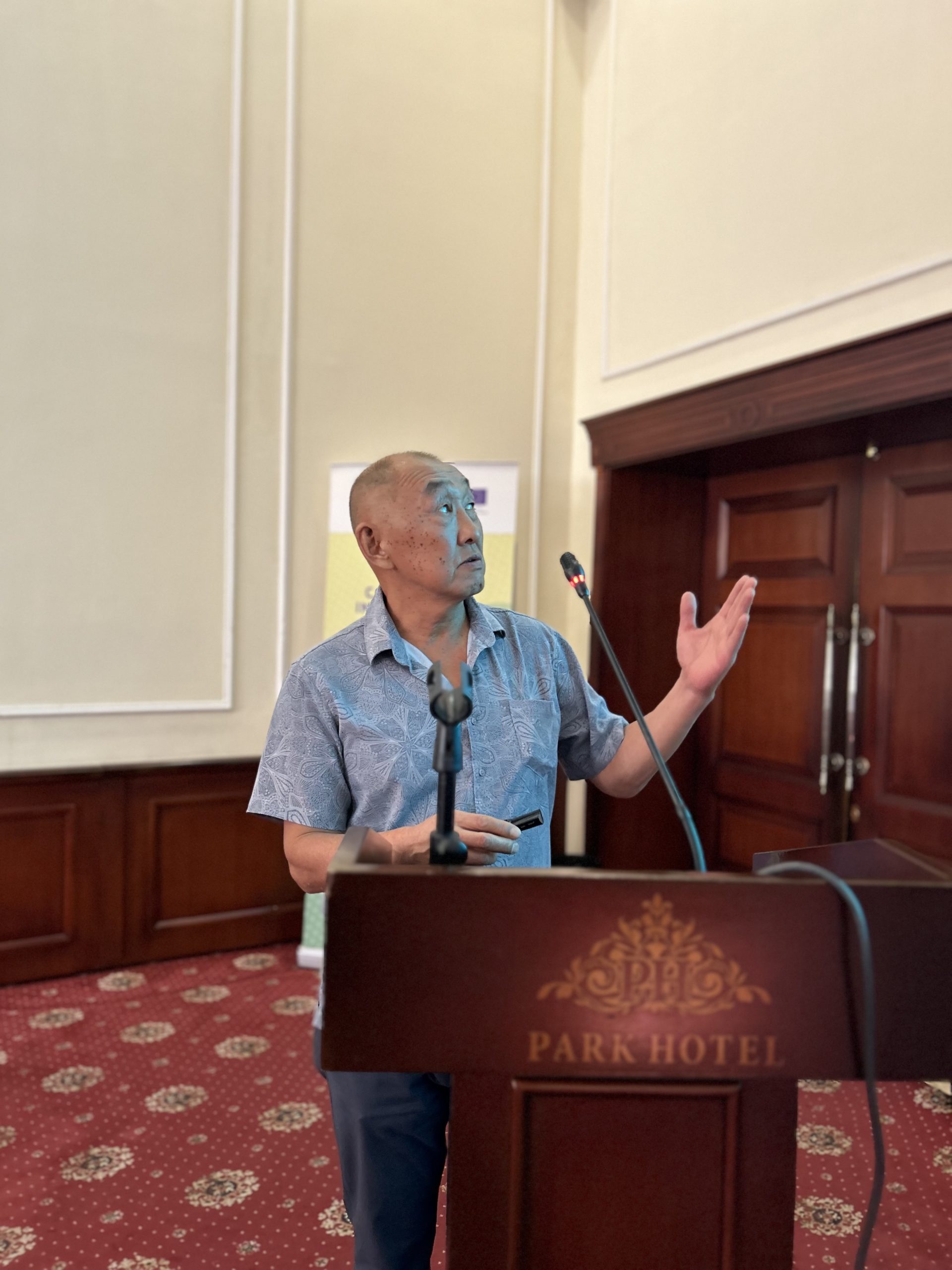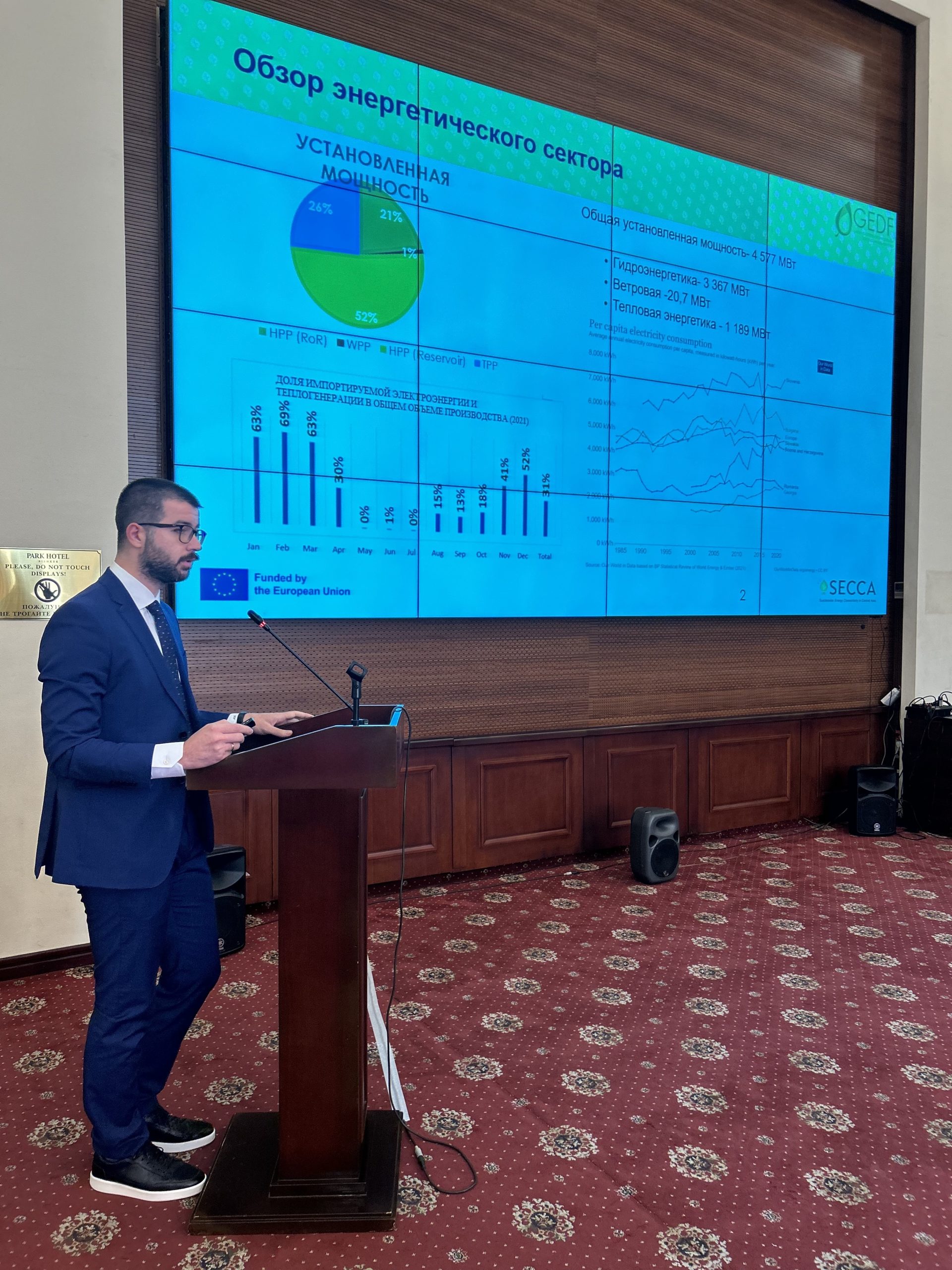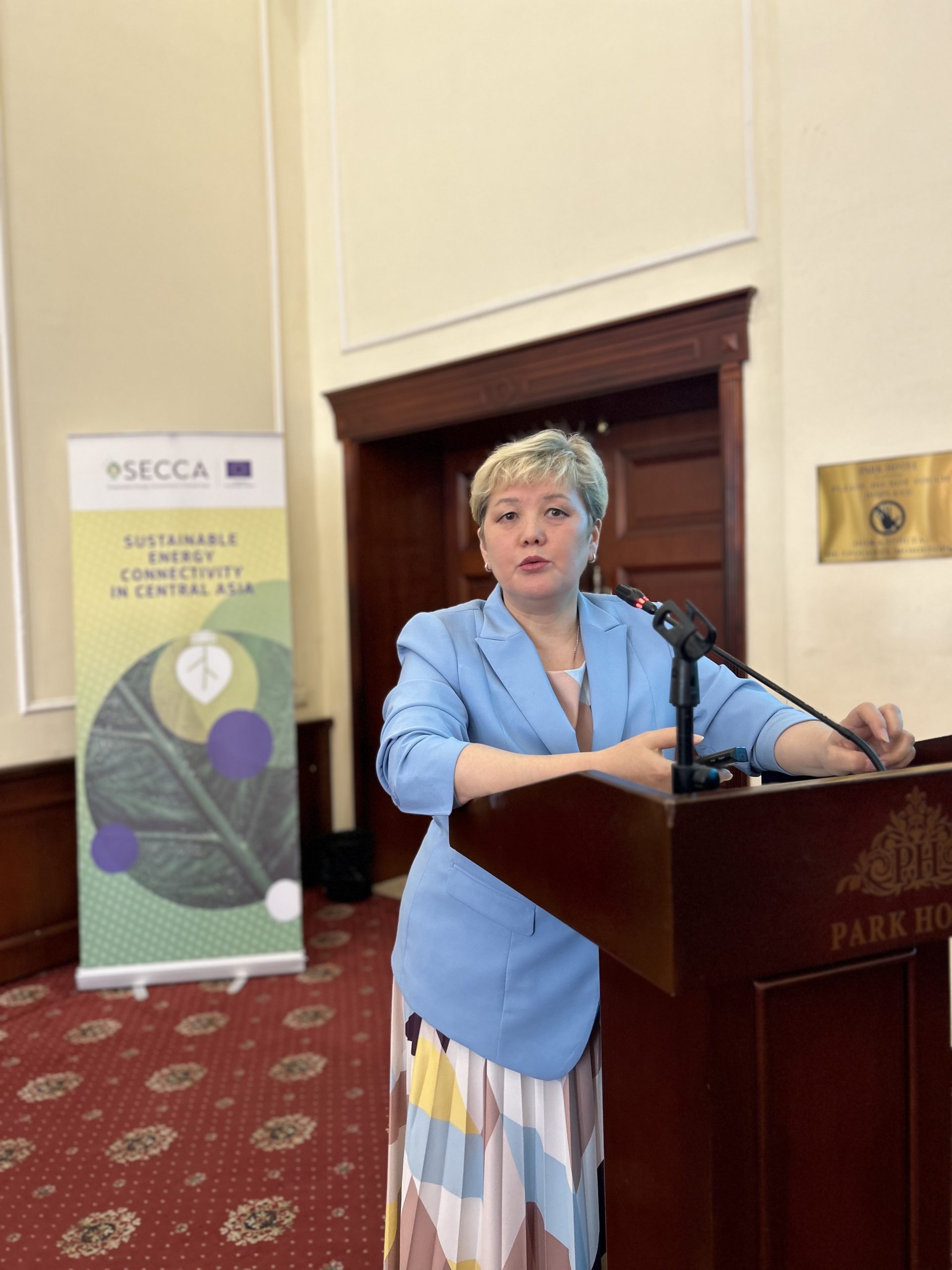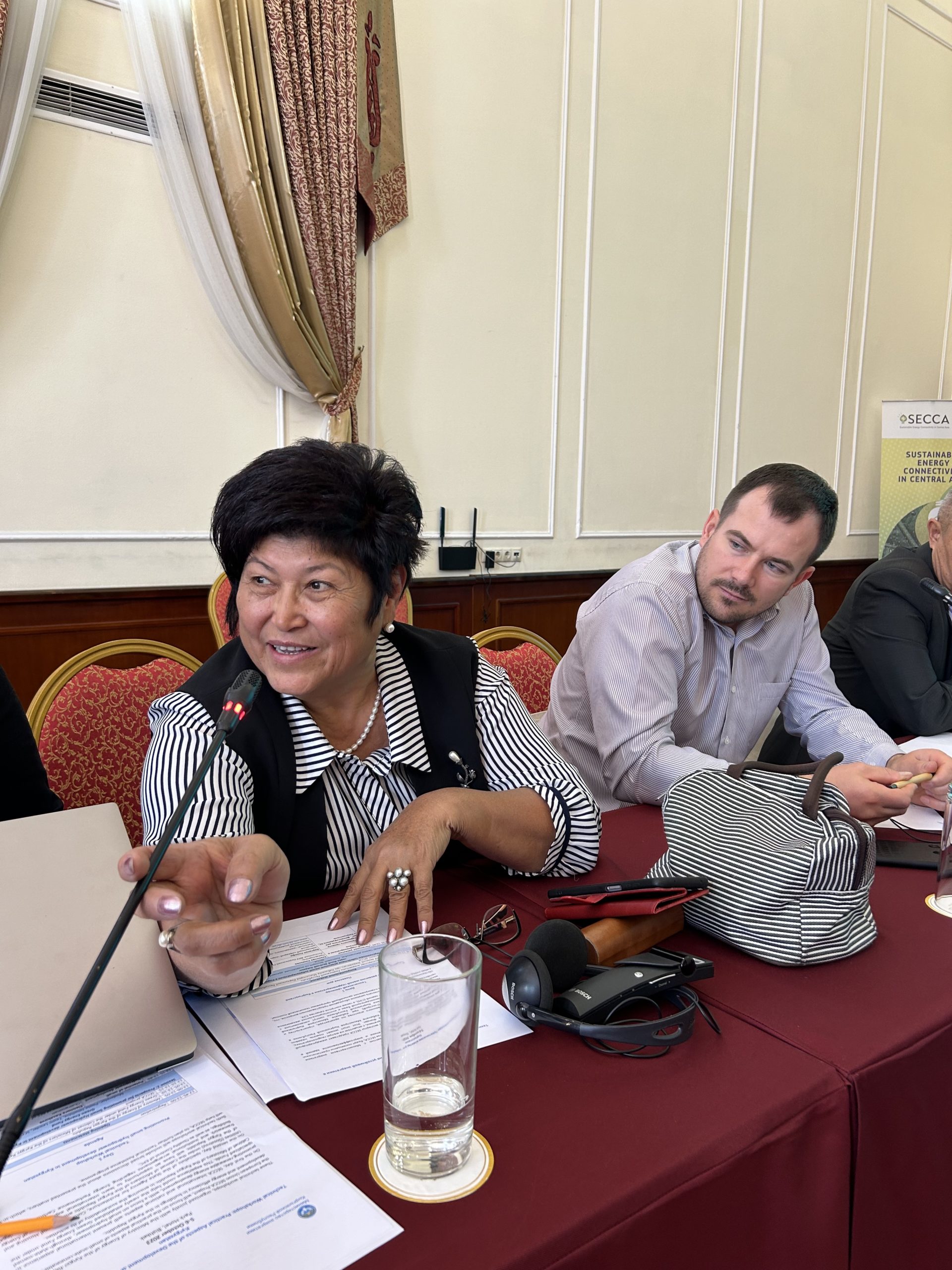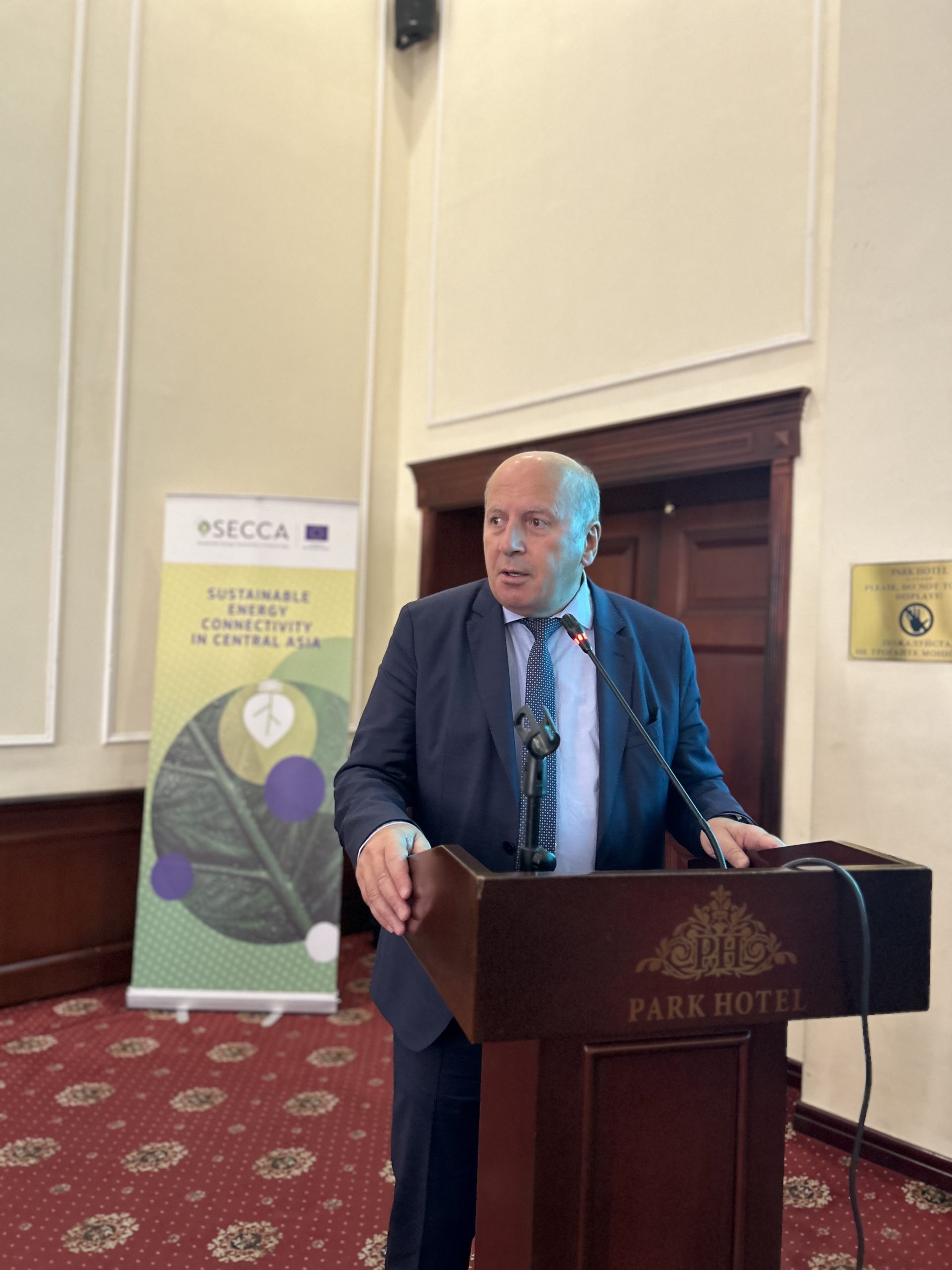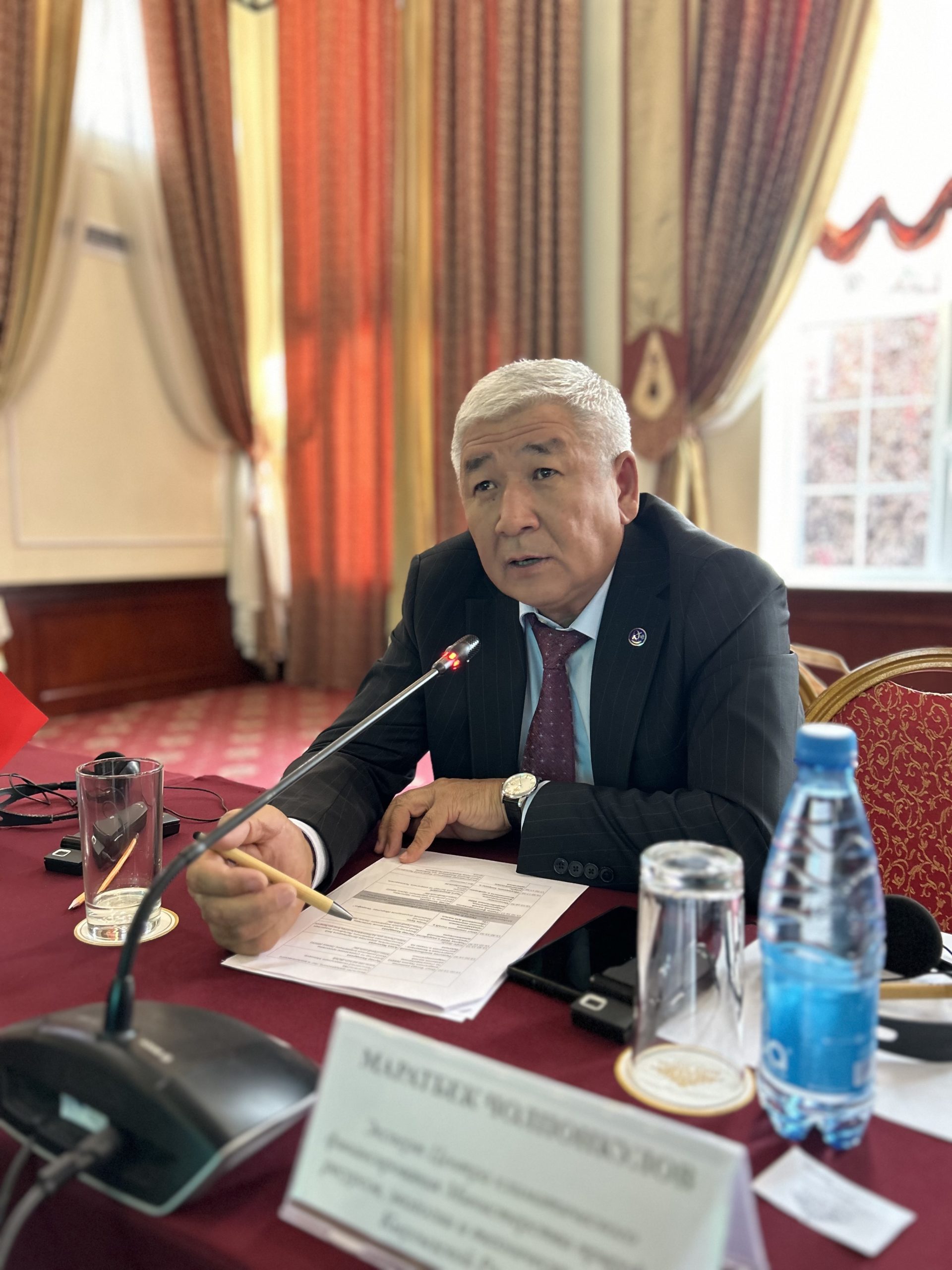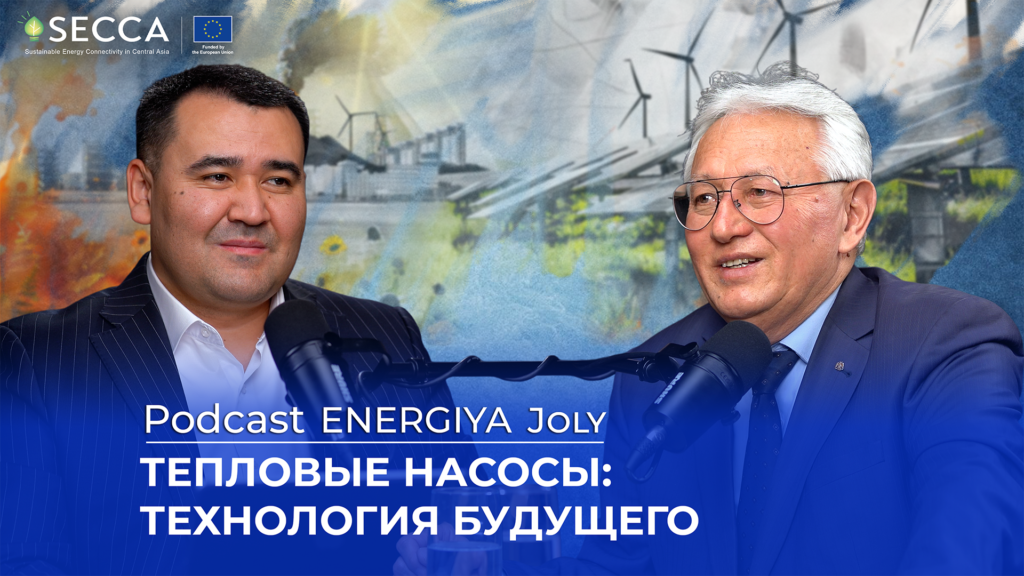Bishkek Kyrgyzstan – Specialists of the Ministry of Energy and the Green Energy Fund under the Cabinet of Ministers of the Kyrgyz Republic attended the technical workshop “Promoting small hydropower development in Kyrgyzstan”.
The workshop was organised jointly by the Ministry of Energy of the Kyrgyz Republic and the European Union’s SECCA project. International and national SECCA experts presented international experience in promoting renewable energy development, with a focus on small-scale hydropower, through state-owned specialised funds.
As stated by President Sadyr Japarov at 2021 COP26, by 2050, Kyrgyzstan aims to achieve a carbon-free green development, and renewable energy sources, especially hydropower, will be the locomotive of carbon-free policy.
Although hydropower already accounts for two-thirds of energy production in Kyrgyzstan and around 90% of total electricity generation is hydro-based, the country still relies heavily on energy imports for more than half of its energy needs, particularly during the winter months. To strengthen energy security, move away from coal and oil, and reduce costs, the Kyrgyz government, amongst other, is rediscovering the small-scale hydropower, and developing small hydropower plants (SHPPs) is one of its top priorities.
Small-scale hydropower is a clean energy source. It has minimal impact on the environment and produces no water or air pollution. As no large reservoirs are created, a small hydropower plant does not cause problems such as greenhouse gas emissions, displacement of people, sedimentation, and disrupted stream dynamics. SHPP is typically durable and low cost to build and maintain, which can also benefit small and remote communities. SHPP can make a sustainable and valuable contribution to the country’s electrical power demands. It can provide energy reliably and efficiently, increasing the level of energy independence and energy security. Diversification of energy supply by developing small hydropower can provide for creation of jobs and development of local businesses. At the same time, it can increase indigenous energy production and decrease fuel import reliance, as well as emissions.
Currently there are 22 SHPPs in operation in Kyrgyzstan with total capacity of 63.38 MW. According to 2023-2027 SHPP Construction plan, 34 more plants are expected to become operative in the course of these years. Besides, total 88 potential sites have been identified by the Government this year for the construction of SHPPs.
During the workshop, the participants discussed prospects for promoting small hydropower in the country through the Green Energy Fund and financing of small hydropower projects. The international experience reviewed during the workshop is particularly useful for the Green Energy Fund in ensuring sustainability of its activities. Georgian Energy Development Fund (GEDF) presented its experience in small hydropower development and applied financial schemes. The EU-funded project Hydro4U operating in Central Asia presented its activities in Kyrgyzstan, in particular, related to the construction of 1.2 MW SHPP in At-Bashi.
The parties agreed that the SECCA project will continue providing technical support to Kyrgyzstan for the development of small hydropower sector.
Workshop materials are available in this link.


